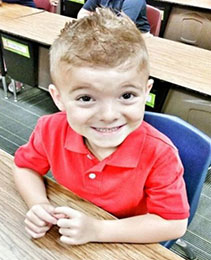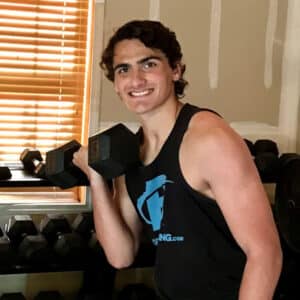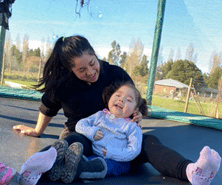
Cash was diagnosed with Congenital Central Hypoventilation Syndrome (CCHS) and was given a tracheostomy as an infant. He spent the first few years of his life in and out of the hospital, battling many ventilator-associated infections.

At five years old, Cash was cervically implanted with the Avery Diaphragm Pacemaker at Phoenix Children’s Hospital, and he was decannulated within seven months! Today, Cash is enjoying the mobility and improved health afforded by diaphragm pacing. His mom has also been given more time and freedom and was able to return to school for nursing. Cash has been a “poster child” for Phoenix Children’s hospital and was invited to run the bases with the Dodgers at Dodger Stadium!
Cash’s mom says, “Since pacing, Cash has been remarkably healthy. He is thriving physically and loves being trach-free. He enjoys video games and hanging out with his brothers.”
Source: ABD-PP-002, Rev B 06/2021
A LOOK INTO CCHS
CCHS, a form of central sleep apnea, is a rare genetic disorder, which causes shallow breathing (hypoventilation) especially during sleep, resulting in a lack of oxygen and a dangerous buildup of carbon dioxide in the bloodstream. This occurs due to impairment of the autonomic nervous system, the portion of the nervous system that controls the involuntary processes of the body. There are only 1,000 confirmed cases worldwide of this disease and no cure is currently available.
For more information on central sleep apnea and CCHS, click here.
THE AVERY DIAPHRAGM PACING SYSTEM
Diaphragm pacing is a method of providing breathing support to patients with chronic respiratory insufficiency whose diaphragm, lungs and phrenic nerves have limited function as the result of injury or illness.
The Avery Diaphragm Pacing System is a system that uses fully implanted electrodes placed next to the phrenic nerve with external antennas that is completely self-contained and does not require complicated configuration. In addition, due to the strategic placement of the Avery electrodes, they are not subject to premature lead wire failure and mechanical stresses that can be a result of repetitive muscle movement.
DIAPHRAGM PACING VS. MECHANICAL VENTILATION
When comparing the Avery pacer to mechanical ventilation, patients usually prefer the pacer as it stimulates the body to draw air into the lungs (negative pressure). This allows for a more physiologically accurate and comfortable breathing pattern than the positive pressure (air forced into the lungs) ventilation provides.
Other Benefits of the Avery Diaphragm Pacing System:
- Allows for normal breathing and speech
- Decreases risk of respiratory and other infections
- Greatly increases mobility
- Increases sense of smell
- No difficulties eating and drinking
- Operates silently which improves active participation in social and educational activities




